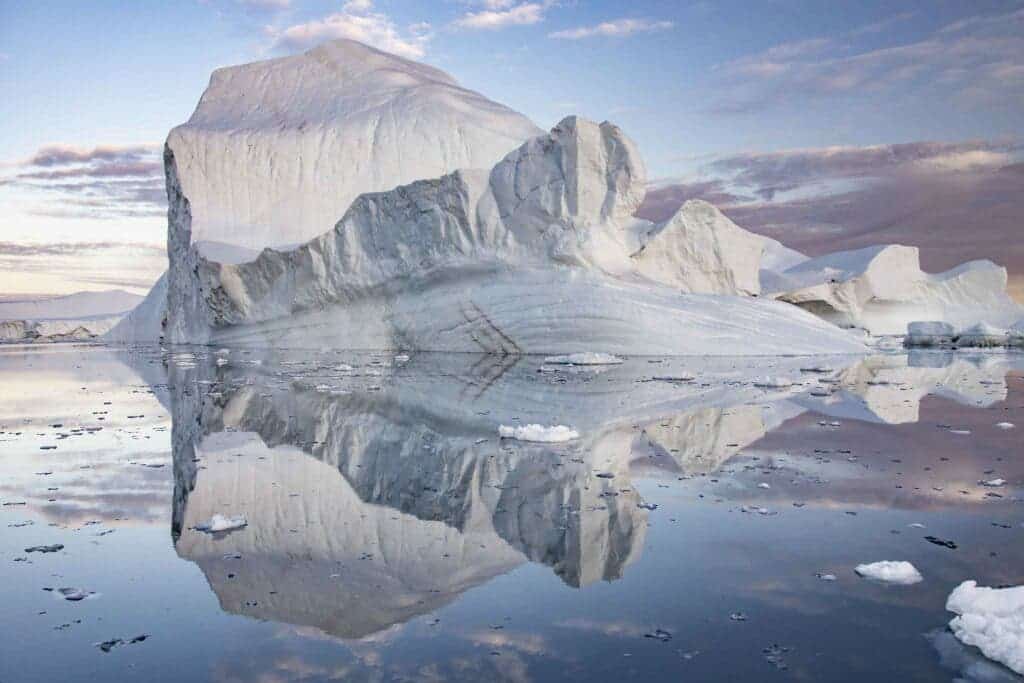A group of Danish researchers found that the Greenland ice sheet experienced a “massive melting event” last week during a heatwave that brought temperatures more than 20 degrees Celsius above seasonal norms. The ice sheet has melted by about eight billion tons a day, which is about twice the normal average rate seen during summer, they found.

Most of Greenland is currently covered by the Greenland Ice Sheet, which spans 656,000 square miles (1.7 million square kilometers) – three times the size of Texas, according to the National Snow and Ice Data Center (NSIDC). It’s the second-largest in the world after the Antarctic one. Together, the two of them contain 99% of the freshwater ice on Earth.
Ice that melts away in Greenland can flow as water into the ocean, where it adds to the ongoing increase in global sea level caused by human-induced climate change. Global sea level has risen about eight to nine inches (21 to 24 centimeters) since 1880. A third of that has happened in just the last two and a half decades, studies have shown.
If all of Greenland’s ice were to melt, the seas would rise by about 24 feet (7.3 meters), according to a 2019 report by NOAA. This would be enough to flood most coastal cities around the world. While this won’t happen overnight, Greenland’s ice sheet is already melting now six times faster than it was in the 1980s, studies showed — and if last week is any indication, we’re up for a wild ride.
A record heat wave
The Danish researchers shared their results on the Polar Portal website, showing that the ice sheet lost 8.5 billion tons of surface mass last Tuesday and a further 8.4 billion tons on Thursday. The scale is so large that the losses on Tuesday created enough meltwater to drown the entire US state of Florida in two inches (or five centimeters) of water.
Massive melting event in Greenland. While not as extreme as in 2019 in terms of gigatons (left image – but still would be enough to cover Florida with two inches of water), the area over which melting takes place (right image) is even a bit larger than two years ago. pic.twitter.com/rEeDIlYTA7
— Polar Portal (@PolarPortal) July 29, 2021
“It’s a very high level of melting and it will probably change the face of Greenland, because it will be a very strong driver for an acceleration of future melting, and therefore sea-level rise,” Marco Tedesco, a glacier expert at Columbia University, told The Guardian. “The snow is like a protective blanket, once that’s gone you get locked into faster melting.”
Tedesco said the higher-than-usual temperatures in Greenland were caused by a patch of high pressure that is sucking and holding warmer air from further south “like a vacuum cleaner.” Once seasonal snow melts, the darker core ice is exposed, which then draws more heat, melts more, and adds to sea-level rise. These atmospheric events are getting longer and more frequent, he added.
Greenland’s melting season normally lasts from June to August. According to the Danish researchers, the island has lost more than 100 billion tons of ice since the start of June this year. While this is less than in 2019, when a whopping 11 billion tons of ice were lost in a single day, the area affected is much larger this year. “There’s a ton of warm and moist air over the ice sheet,” glaciologist Brad Lipovsky told The Guardian.
A recent study from the University of Reading suggested that the Greenland Ice Sheet is inching in towards a dangerous threshold. In around 600 years, it will melt enough that the sheet won’t ever recover, no matter what we do, and sea levels remain permanently higher. This scenario assumes that current rates of melt remain constant.









